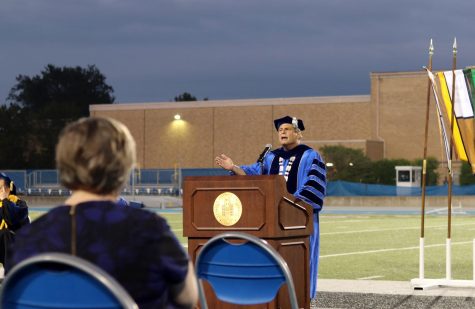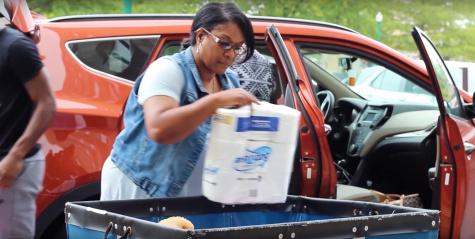Weather center provides service to community
There are not many people on campus who know that Eastern has a weather center.
“The weather center was started last January when we installed our digital weather station on the physical science building’s roof”, said Cameron Douglas Craig, weather center co-director. The weather center was created from “a previous idea I helped to formulate at Indiana State University,” said Craig.
The center tells many different items such as temperature, wind chill, cloud height, dew point, and vapor pressure. “EIU Weather Center submits and receives several meteorological products to and from NOAA and NWS (National Oceanic and Atmospheric Administration and National Weather Service).
Every minute our digital weather station submits current weather data to NOAA and NWS severs as well as weatherunderground.com. Our site also retrieves weather information in the form of maps, radar/satellite images, and severe weather information for the public to access said Craig.
The center also allows students to give weather reports.
Kevin Jeanes works at the weather center.
“I’ve been working with it since December and I enjoy working with it because it gives me a chance as well as others to gain weather and meteorological analysis information,” Jeanes said.
They meet every week day except for Thursday and one person will create the broadcast.
“I think a great think about the weather center is the fact that you can type in the Web page and find out exactly what the weather is like outside in seconds. The information is much more reliable because it’s all coming straight from on top of the physical science building,” Jeanes said.
The weather center is much more than just telling the temperature.
“The EIU Weather Center has real-time weather information, severe weather information, special weather features, and a data archive for anyone interested in researching weather and climate,” said Craig.
The students that have been through its program have learned a lot, such as former student Jeff Fell.
“I learned many things over my course in broadcast meteorology, these include how low and high pressure cells work, how the pressure cells affect temperature, precipitation, and wind speed and direction,” said Fell.
“The class taught me how to effectively present myself in front of an audience while talking about the weather. It taught me how to present things well.”
At times there will be a teacher that inspires their students because they are so passionate about their work.
“Cameron Craig is probably one of the most interesting and knowledgeable people in the field of weather. He truly is an inspiration to my learning in the class,” Fell said.








































